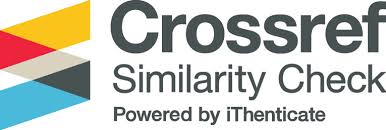Antibacterial and Wound Healing Activity of Fractions of Kamboja (Plumeria acuminata Ait) Leaves Ethanol Extract on Staphylococcus aureus Infected Rabbit Skin
Abstract
Kamboja (Plumeria acuminata Ait.) plant is traditional medicine used as medication for abscess and yaws. Flavonoid is a component of chemical compound in kamboja leaves that supposed to have antibacterial activity. The aim of the experiment was to find out the ability of kamboja leaves fractions creams in healing the infection of Staphylococcus aureus on rabbit skin and to know the most effective concentration. Kamboja leaves were extracted by soxhletation method using 96% ethanol solvent, and then the obtained extract was fractionated using n-hexane, ethyl acetate and 70% ethanol solvents. The antibacterial activities of the three fractions were tested in the form of creams by in vivo method. It was found that ethyl acetate fraction was the most effective, and then various doses were conducted with concentrations of 15%, 20%, and 25% using test animals infected by Staphylococcus aureus.The result of the experiment showed that ethyl acetate fraction had the best ability compared with n-hexane and ethanol 70% fractions. Ethyl acetate fraction cream concentration of 15%, 20%, and 25% could heal the infection for 11.40, 10.60 and 9.40 days, respectivelly.












